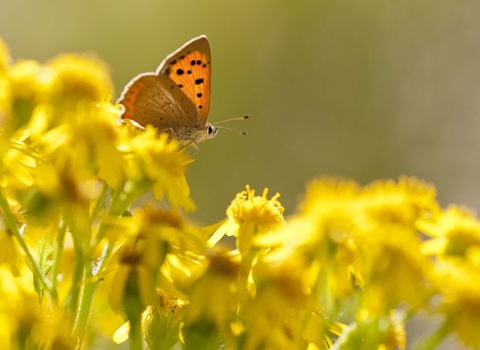©Philip Precey

Small Copper on Ragwort ©Ross Hoddinott/2020VISION
Common ragwort
The yellow flower heads of common ragwort are highly attractive to bees and other insects, including the cinnabar moth.
©Philip Precey

Small Copper on Ragwort ©Ross Hoddinott/2020VISION